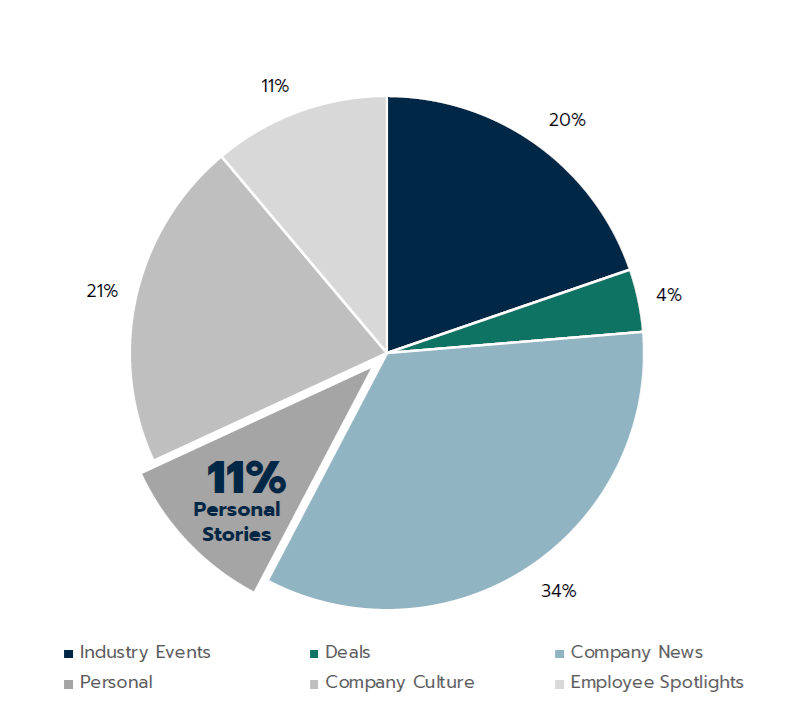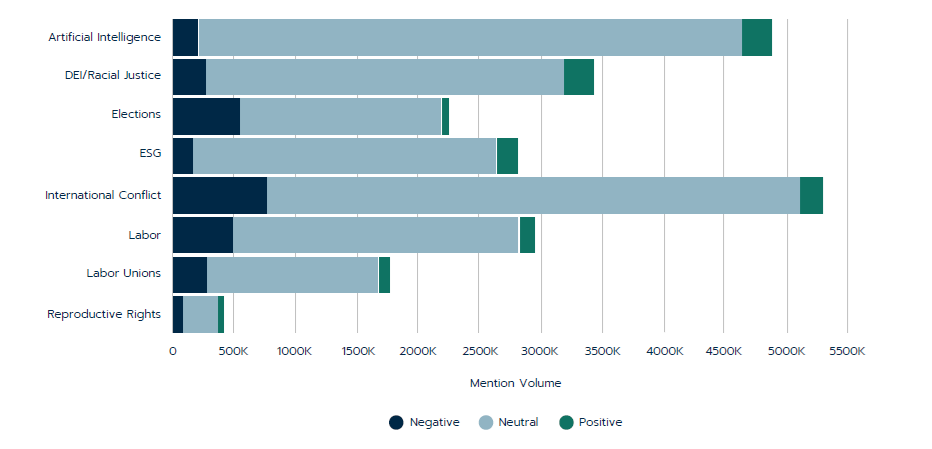By the Numbers: How CEOs are using social media
And the opportunities they’re missing.

Social media isn’t kid stuff.
New data from H/Advisors Abernathy found that 7 out of 10 Fortune 100 CEOs have at least one social media account, and 48% post at least once a month.
But there has been a decrease in the frequency of social media use among these top executives.The survey also found that post frequency decreased 189% year-over-year between 2022 and 2023, with a 40% decrease in engagement.
Here’s what else we can glean from the social media use of the most powerful leaders in business.
The platforms CEOs use
LinkedIn is, unsurprisingly, the most popular platform for CEOs hosting 68% of the Fortune 100 CEOs, a 4% uptick since 2022. The average CEO on the platform posts twice a month, but the top performers chime in five times a month, indicating that a more regular cadence leads to a bigger impact, but daily posting isn’t necessary.
At the other end of the spectrum, CEOs are shying away from X. Not only are CEOs posting 14 times less than they did in 2022, but their followings also shrank by 17% in the last two years. Since that time, X has seen massive upheaval with the purchase of the site by Elon Musk and has consistently struggled with brand safety. The number of CEOs who have claimed their names on X but never posted is up 75% since 2022. Among those CEOs who do still use the platform, they posted an average of six times per month, indicating the higher volume, more frequent cadence expected by most X users.
What gets the most engagement
Users are most likely to like, share or comment on content from CEOs that contains company news, the survey found. Thirty-two percent of the most-engaged posts feature company news, further solidifying chief executives’ role as spokespeople for their organizations. The next-most popular were posts about employees, followed by personal posts, posts about critical issues and events, the analysis found.
This is also reflected in what CEOs share. The analysis found that 34% of posts from CEOs are about company news, followed by company culture and events.
While personal anecdotes are still a relatively small portion of all posts shared at just 11%, it increased 6% since 2022, the highest jump across all categories, H/Advisors Abernathy found.

This likely points to a push for greater authenticity and humanization of employers. Social media as a whole often leads to the blurring of lines between personal and professional, and even LinkedIn, once seen as strictly for business, is seeing a greater emphasis on the whole person. CEOs aren’t immune from this trend.
Most CEOs stay away from the most sensitive issues on social
Even as consumers continue to demand that companies make statements on social, international and political topics, most CEOs avoid addressing the topic from social media channels in their own name.
According to the analysis, only 20% of CEOs address what H/Advisors Abernathy calls “critical issues.” Those that do choose to post often find high engagement, with 10% of the top-engaged posts falling into this category, but keep in mind this can be a double-edged sword: people can engage when they’re angry just as easily as when they’re happy.
H/Advisors Abernathy found that the most negative sentiment arose when leaders posted about international conflict, namely the Hamas terrorist attacks in Israel and ensuing war. Posts around elections, labor and DE&I were also touchy, dovetailing with our reporting from last week on the riskiest topics for companies to engage on.

New CEOs often miss their moment
A CEO transition is both a perilous and promising time for companies. There’s increased media attention, internal curiosity and unease, and a chance for the new leader to make their mark. But the research shows that many new CEOs are ignoring the opportunity that social media represents in their first months with a company.
Only one in six newly appointed CEOs increased their posting rhythm upon taking the new job, according to the data. In fact, a full 30% of new CEOs decreased their posting after taking their new roles. That may seem understandable from the outside – after, all, they’re very busy in this juncture – but communications professionals should be working to build trust with these new leaders and showing them the power of social media to solidify their branding, share their priorities and become a thought leader inside and outside the organization.
Allison Carter is editor-in-chief of PR Daily. Follow her on X or LinkedIn.








.png)